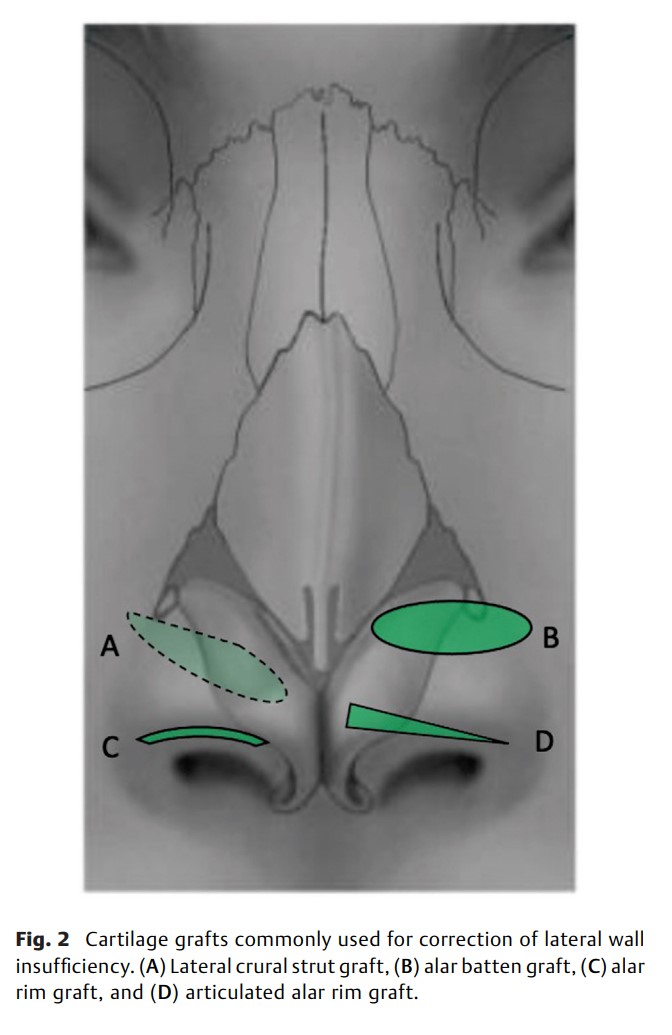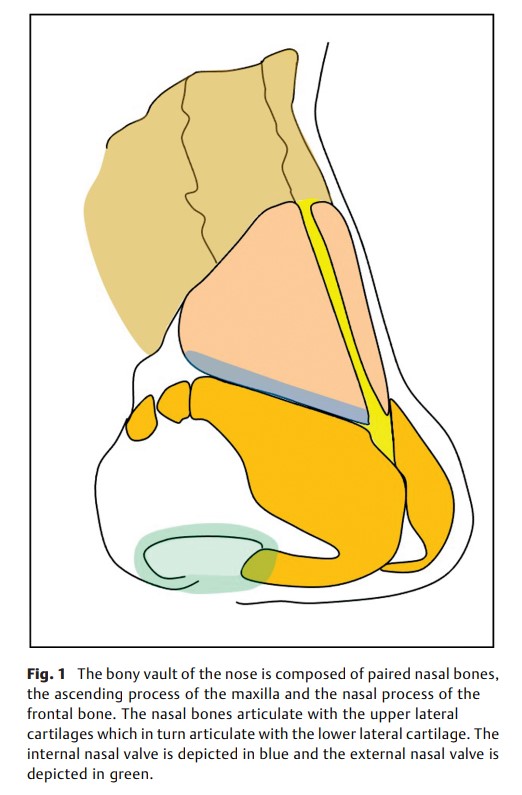
Issue 06 · Volume 39 · December 2023
Nuances of Functional Rhinoplasty
Guest Editor: Krista L. Olson, MD and Sunthosh Kumar Sivam, MD
‘But I’ve lost my nose!’
“Then you’d better see a doctor about it. I’ve heard there’s a certain kind of specialist who can fix you up with any kind of nose you like.’ “
“The Nose”, by Nikolai Golgol (1836)
鼻子是一个嗅觉器官,但正如果戈里在他的短篇小说中所写,它的意义远不止于此。 鼻子的外观以及对鼻子的理解会影响一个人的个性以及在社会中的地位。 在手术过程中有时会感觉鼻子有自己的想法。 然而,作为面部整形外科医生,我们不能忘记鼻子的功能,最终形式和功能必须并存。
本期Facial Plastic Surgery由Krista Olson博士和Sunthosh Sivam博士为客座编辑,重点探讨如何在保持或增强鼻部外观的同时,创造出堪称典范的鼻部功能。涵盖的主题从鼻阻塞评估到儿童或鼻软组织受损患者的复杂鼻重建。Liu和 Lyford-Pike回顾了鼻侧壁缺损的处理方法。Kao和Ho介绍了鼻部外伤后畸形的治疗方法;而Dermody、Lindsay和 Justicz则分析了鼻阻塞的各种移植方案。其他作者介绍了鼻中隔重建技术、鼻中隔穿孔修复、功能性鼻腔手术在阻塞性睡眠呼吸暂停和面瘫中的作用。 此外,Humphrey和 Lawrence撰写的Facial Plastic Surgery Alert介绍了Ozempic 对患者的影响。
无论我们试图对鼻子进行怎样的美学改造,都必须实现或保持良好的鼻功能。 Facial Plastic Surgery的本期内容将为您提供一个全新的视角,让您了解鼻子的细微差别,欢迎阅读。
Original Article
Sara W. Liu, Sofia Lyford-Pike
Lateral wall insufficiency is a commonly encountered etiology of nasal obstruction, resulting from dynamic collapse at the level of the internal or external nasal valve. Various management strategies exist to strengthen the lateral wall or stent the nasal valves to relieve nasal obstruction, and range from noninvasive devices, minimally invasive implants, or surgical reconstructive techniques. Surgical options to address the nasal valves are selected based on each patient's anatomic findings, aesthetic and functional goals, and surgeon preference. This article describes the anatomy and physiology of the nasal sidewall and nasal valves and diagnosis of lateral wall insufficiency, and provides a framework for treatment options.

Original Article
W. Katherine Kao, Tang Ho
Nasal bone fractures are the most common fractures of the facial skeleton and are often accompanied by bony, cartilaginous, and soft tissue injuries. These injuries are often complex, and when untreated or inadequately treated, can lead to posttraumatic nasal deformity. The most common deformities are the crooked nose and the saddle nose. Both deformities may result in significant cosmetic and functional concerns. The treatment of these deformities can be complex, requiring careful evaluation of the nose and thoughtful planning to correct the cosmetic deformity and restore functional integrity. The rhinoplasty surgeon will benefit from having a large repertoire of techniques to achieve these repairs. In this article, we discuss the options and concepts for the management of nasal bone fractures as well as complicated posttraumatic nasal deformity. Level of evidence is not available.

Original Article
Sarah M. Dermody, Robin W. Lindsay, Natalie Justicz
A wide variety of grafting materials and techniques can be used to create functional and aesthetic changes in rhinoplasty. Choosing the optimal grafting approach is critical to achieving an optimal patient outcome. We present a review of autografts, allografts, and alloplasts used in primary and revision rhinoplasty and discuss factors that impact graft choice. Autologous grafts serve as the pillar for grafting material in rhinoplasty given their reliable long-term outcomes, low rates of infection, resorption, and extrusion, and ability to provide structural scaffolding as well as contour. Cadaveric allografts can be utilized as a source of grafting material in certain clinical scenarios including revision rhinoplasty and have been shown to be equally safe and effective as autologous grafts while avoiding donor-site morbidity. Alloplasts can prove useful in rhinoplasty in cases of iatrogenic nasal deformities or revision cases. Careful consideration of clinical scenario, patient factors, and outcome goals is necessary to choose the appropriate grafting approach to address functional and cosmetic outcomes.
FACIAL PLASTIC SURGERY ALERTS
我们很高兴向您介绍本刊的一个新栏目:Facial Plastic Surgery Alerts。本栏目将不定期为您提供与流行文化中盛行的面部整形 "热门话题 "相关的科学事实。

Implications of Ozempic and Other Semaglutide Medications for Facial Plastic Surgeons
Clinton D. Humphrey, Anna C. Lawrence
Obesity is a growing global health concern, leading to various health issues, including diabetes. Semaglutide-based medications, such as Ozempic, Wegovy, and Rybelsus, have emerged as potential treatments. These medications, belonging to the glucagon-like peptide-1 (GLP-1) receptor agonist class, mimic the action of GLP-1, regulating appetite and promoting weight loss. Clinical trials have shown their effectiveness in reducing body weight and improving metabolic parameters. Ozempic, though Food and Drug Administration-approved for diabetes, is also used off-label for weight loss alone. Rapid weight and fat loss with Ozempic can lead to the characteristic “Ozempic face,” where facial volume and fat are depleted, resulting in wrinkles and sagging skin. Providers prescribing Ozempic seldom counsel patients about the potential impact on the face. As a result, the plastic surgery community faces a challenge in managing facial changes associated with rapid weight loss. Dermal fillers, skin tightening techniques, and surgical interventions are useful for both restoration of facial volume and to manage excess skin. Discontinuation of Ozempic should be considered prior to general anesthesia due to gastrointestinal side effects including delayed gastric emptying. As the popularity of Ozempic grows, facial plastic surgeons must be aware of both the impact on facial appearance and perioperative considerations.
